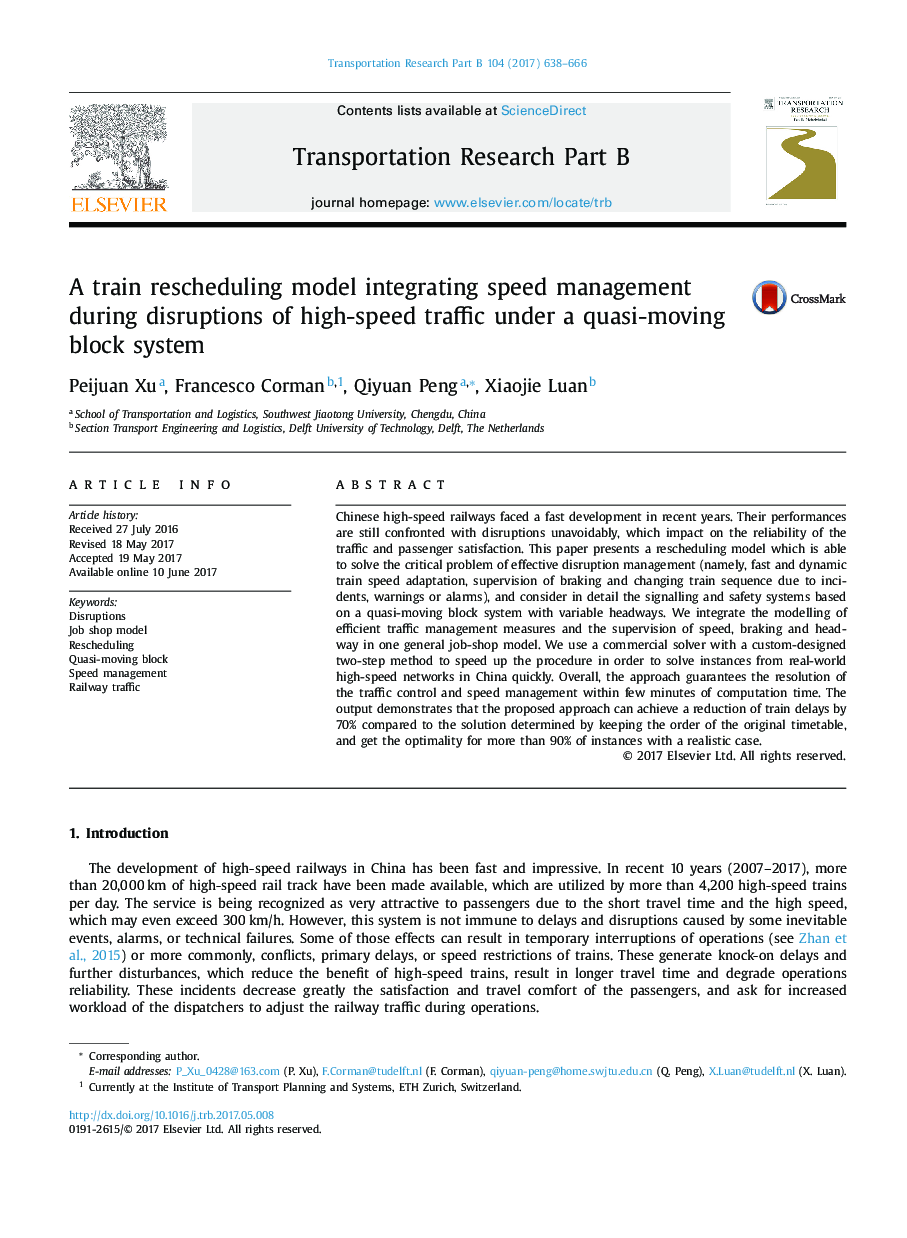| کد مقاله | کد نشریه | سال انتشار | مقاله انگلیسی | نسخه تمام متن |
|---|---|---|---|---|
| 5126980 | 1488942 | 2017 | 29 صفحه PDF | دانلود رایگان |
- A MILP model based on alternative graph is proposed to handle disruption in high-speed railway with a quasi-moving signaling system, by integrating traffic management and speed management.
- The model is used for the case of disruptions causing speed restriction with a variable time and geographic extension, and the concurrent presence of smaller primary delays perturbing further the traffic.
- A two-step procedure is proposed to speed up the computation of upper and lower bounds, which gives a considerable improvement compared to a commercial solver.
- We test our model based on the cases from Wuhan-Guangzhou high-speed railway, and the best solution is measured by comparing with the solution from several typical scheduling rules.
Chinese high-speed railways faced a fast development in recent years. Their performances are still confronted with disruptions unavoidably, which impact on the reliability of the traffic and passenger satisfaction. This paper presents a rescheduling model which is able to solve the critical problem of effective disruption management (namely, fast and dynamic train speed adaptation, supervision of braking and changing train sequence due to incidents, warnings or alarms), and consider in detail the signalling and safety systems based on a quasi-moving block system with variable headways. We integrate the modelling of efficient traffic management measures and the supervision of speed, braking and headway in one general job-shop model. We use a commercial solver with a custom-designed two-step method to speed up the procedure in order to solve instances from real-world high-speed networks in China quickly. Overall, the approach guarantees the resolution of the traffic control and speed management within few minutes of computation time. The output demonstrates that the proposed approach can achieve a reduction of train delays by 70% compared to the solution determined by keeping the order of the original timetable, and get the optimality for more than 90% of instances with a realistic case.
Journal: Transportation Research Part B: Methodological - Volume 104, October 2017, Pages 638-666
